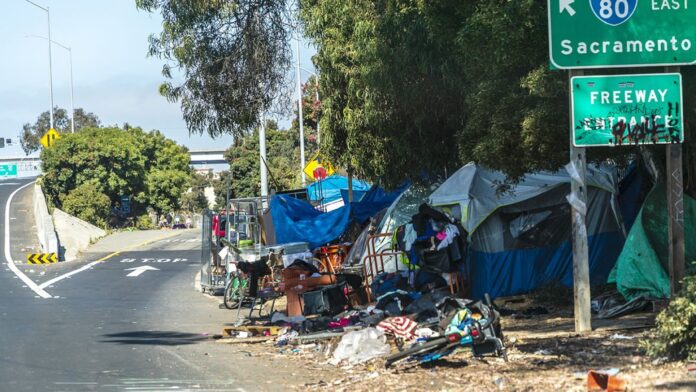The value of residential real estate in crime-ridden San Francisco has dropped significantly in recent years, with prices dropping by around 16.7%. This contrasts with a more moderate decline of 3.3% in the rest of the country, resulting in a difference of about 13.4 percentage points.
The decline in the housing market in San Francisco has resulted in an additional loss of approximately $260 billion in the value of residential real estate compared to what would have occurred if the city had followed the pattern shown nationally, according to the research center Hoover Institution.
Zillow, a real-estate marketplace company, projected that the value of San Francisco’s housing stock was close to $2 trillion before the price drop.
The significant decline in San Francisco’s housing prices is attributed to the city losing over 65,000 residents, which accounts for roughly 7.5% of its population. This population loss represents the largest among major cities in recent years.
According to New York Post, more than 500,000 people have reportedly left California since the beginning of the COVID-19 pandemic 2020.
The outlet added that the largest population declines were in San Francisco at 7.1 percent.
Hoover Institution reported:
Home values in some of the most expensive San Francisco neighborhoods have been significantly affected. The median home price in the Pacific Heights neighborhood, home to former Speaker of the House Nancy Pelosi and actress Julia Roberts, declined more than 20%, from a peak of $2.05 million to $1.6 million, a loss of over $400,000. The median value in the Nob Hill neighborhood, home of film director John Waters, declined nearly 33%, from a peak of $1,662,500 to $1,170,000, a loss of nearly $500,000.
Quality of life and crime have worsened in San Francisco, even in these expensive neighborhoods. Nearly 90 percent of Nob Hill sidewalks and streets were recently found to be soiled with feces. Unacceptable street and sidewalk sanitation, including human feces and used hypodermic needles, have been an issue for San Francisco for years. In 2018, the city created a pooper scooper team, each member of which received annual compensation of about $211,000 that year. Given the inflation that has occurred since that time, scooper compensation may be close to $250,000 per year today. San Francisco spends nearly five times as much on street sanitation than comparable cities, but despite this high level of spending, city streets remain dirty.
San Francisco’s crime and sanitation issues reflect the city’s tacit acceptance of illegal drug use. San Franciscans are paying an extremely high price for this, and so are drug users. Drug overdose deaths in the city jumped to 200 in the first three months of this year, representing a rate about 3.8 times higher than the national proportion of deaths to population.


